This media year, which is closing with courtroom cameras covering Egypt's deposed President Hosni Mubarak on trial for killing his own citizens in the streets, opened with those streets astir with protests.
A lot certainly can happen in a year, and 2011 has been an especially vintage year for news, much of it presaged by those stirrings in Egypt.
But it fell to one individual, the street trader Mohamed Bouazizi, further along the Arabic littoral of North Africa, in Tunisia, to set the entire region ablaze through his angry suicide by self-immolation.
It's the job of good analytical journalism to trace the revelatory story-line, to connect the dots, to clarify the often hazy, confusing but important links in any chain of influence, cause and effect. And we've seen some creditable efforts throughout this past year to do just that (alongside some terrible examples of conspiracy theories that border on crazy, masquerading in some media outlets as 'explanation').
The venerable Time magazine -- financially troubled but still editorially strong, unlike its longtime rival Newsweek, which sadly slumps in both departments -- excelled through the year at this vital task of explicatory context-provision. The way it placed Bouazizi's death so clearly into the overall matrix that in North Africa and the Middle East came to be called the Arab Spring was a classic of its kind.
But I'm disappointed to be still waiting for American media to fully recall the place in our own country of self-immolation as citizen protest. I'm thinking especially of 1965's anti-Vietnam War suicide by Norman Morrison, an Ohio- and Scotland-educated Quaker originally from Pennsylvania who set himself afire outside Defense Secretary Robert McNamara's Pentagon office. Among Morrison's words left behind was the phrase: "The most important thing in the world is that our faith becomes living experience and deed of life."
Morrison's was followed a week later by the fiery death outside the United Nations building in New York of Roger LaPorte, a member of the Catholic Worker Movement. He did not die immediately and was able to say: "I'm a Catholic Worker. I'm against war, all wars. I did this as a religious action."
Both men were of course emulating the Vietnamese Buddhist protest practice (not a tradition, exactly, but it gained currency in the early 1960s) which caught enormous media attention when journalists David Halberstam and Malcolm Browne captured it in words and in iconic, flaming imagery.
Unsurprisingly, but often overlooked in the U.S., the American protests -- especially Morrison's, with its more accusatory setting outside the Defense Department -- were greatly lauded in Vietnam... first in North Vietnam alone of course, but later in the South and eventually as history for the unified post-war country. A special postage stamp was printed featuring Morrison, and the poet laureate Tô Hú′u composed a multi-stanza elegy that entered the national consciousness, committed to memory by generations of schoolchildren. It focused on Morrison's youngest child, and included the much-quoted line, "Daddy's gone gladly; don't be sad!"
It had a big impact throughout the so-called Third World, especially those countries with anti-authoritarian, anti-colonial or anti-war movements in progress. Across the intervening decades I've often heard lines from that poem repeated in discussions from Mozambique to Niger to the Gaza Strip.
What I found the oddest U.S. media blindness this year to America's own experience of this discomforting mode of protest came with The World, usually a thorough news-background broadcast coming out of Boston -- in fact from the public station WGBH, and co-produced along with its distributor Public Radio International and with the BBC World Service to give it further global credentials. The World compiled a survey it called "Self-Immolation as Protest", prompted by the Bouazizi story and citing the phenomenon's occurrence in varied locations from India to South Korea, Hungary, Great Britain and Japan.
It consulted authorities like Dr. Lanny Berman, Executive Director of the American Association of Suicidology in Washington, and Dr. Michael Biggs of St. Cross College and the Department of Sociology in the University of Oxford, who specializes in the study of political protest and has devoted much attention to 20th and 19th century America. But the program as broadcast left out completely the two young 1960s Americans.
One comment from The World struck me as pointed in its cynicism. Briggs, the Oxford sociologist, described the use of fire in a suicidal protest as "media friendly" on the grounds that "it provides a terrible, gruesome image, but not one that is too gruesome to be shown on television or in a newspaper."
On the other hand, I am told that in at least some Buddhist traditions self-immolation is regarded as a high expression of one's conscience through suffering.
It's impossible, from a reader and viewer's standpoint, to know for sure what lay in the heart and soul of people like the Christian Morrison and LaPorte or the Muslim Bouazizi, but I have a strong sense they will have had more in common with a Buddhist of conscience than with a sociologist doing media analysis.
Read more of David Tereshchuk's media industry insights at his weekly column, "The Media Beat", with accompanying video and audio. Listen also to The Media Beat podcasts on demand from Connecticut's NPR station WHDD.